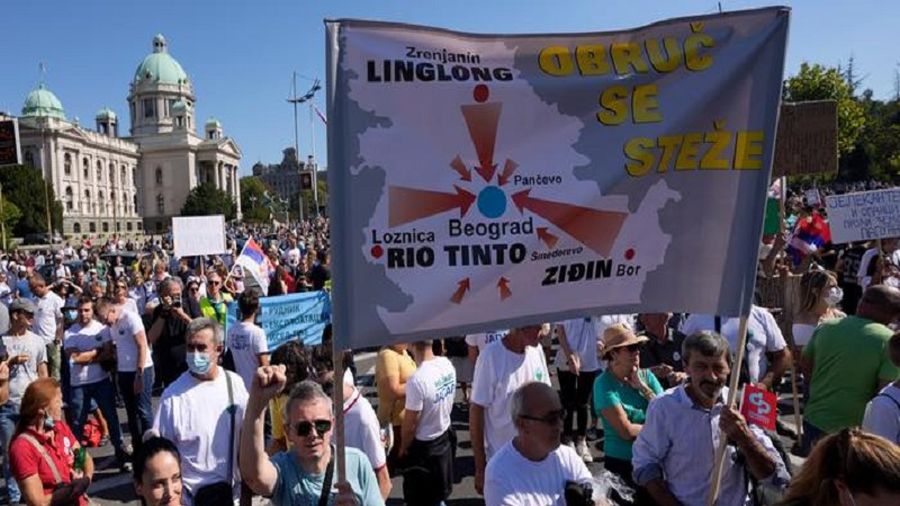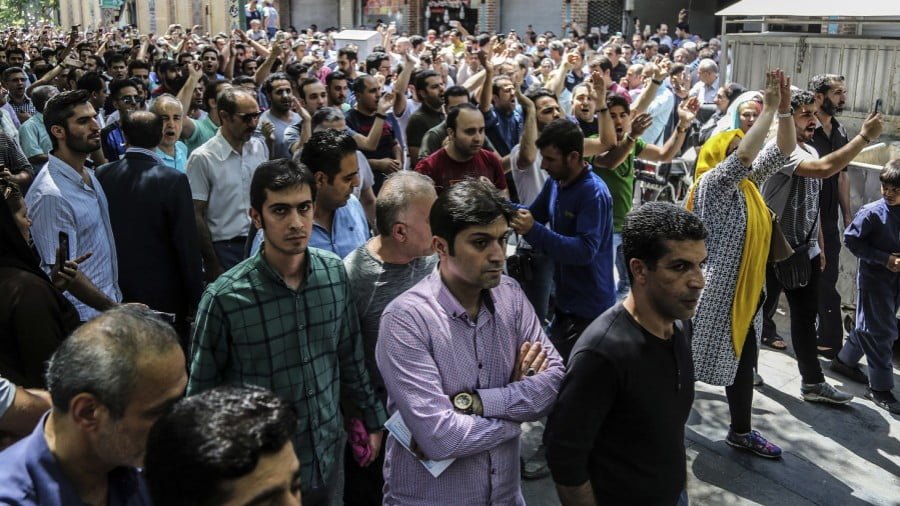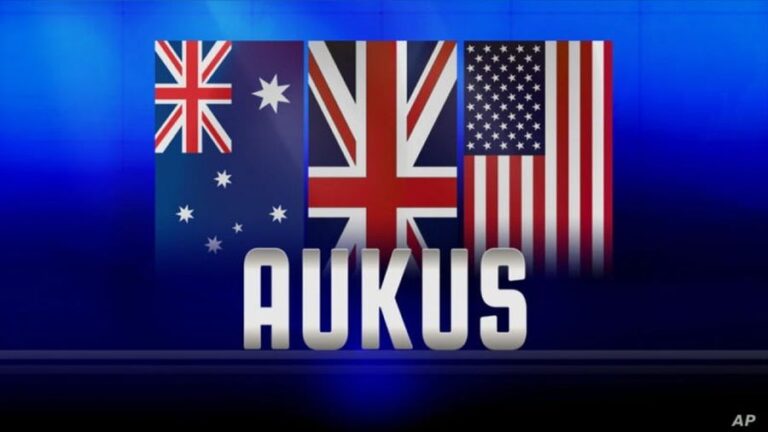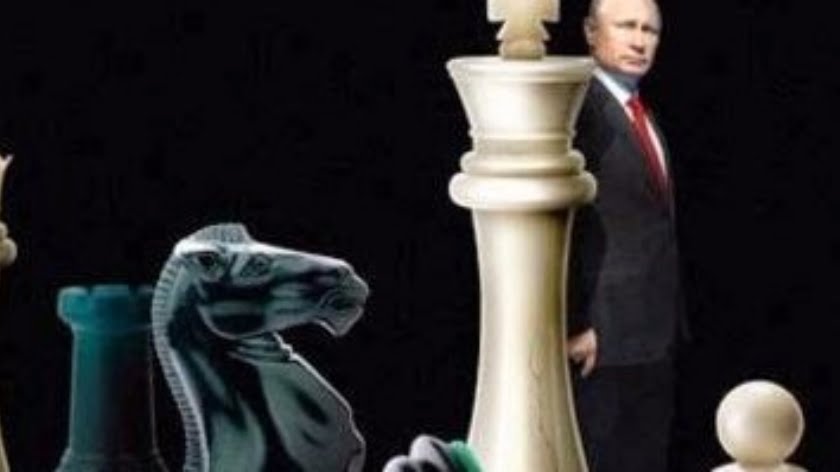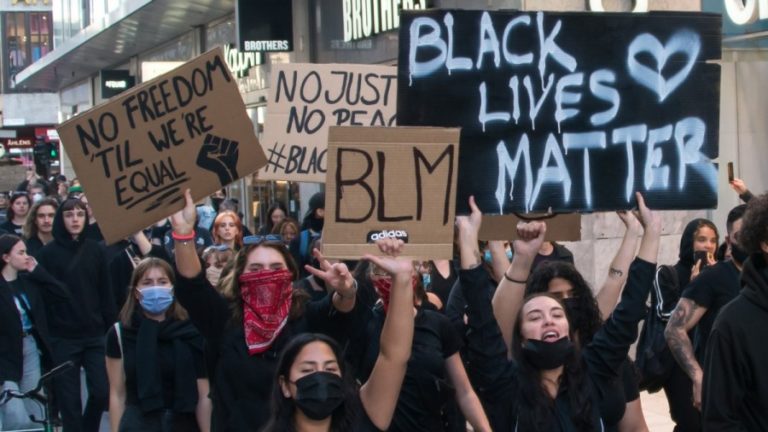To What Extent Was the West Behind Serbia’s Rio Tinto Protests?
It’s fair to presume that multiple interest groups were behind the latest events and their portrayal: grassroots forces, prominent personalities, Western NGOs, the Serbian government itself, and perhaps competing ‘green’ oligarchic forces. The takeaway is that Serbia is still a laboratory for experimenting with socio-political trends.
Serbian President Vucic condemned Western NGOs for what he claimed were their role in organizing protests against Rio Tinto’s lithium mining deal, even going as far as “helping to topple the government”. The authorities canceled the deal last week after enormous grassroots pressure driven by the project’s expected environmental consequences. It also came shortly after Serbian tennis star Novak Djokovic was scandalously deported from Australia. He’d earlier posted on social media in support of the protests. It deserves mentioning too that Serbia’s slated to hold national elections in April.
There’s some crucial background that can help observers better understand what’s happening. The Serbian President routinely talks about dramatic threats to his country, including the numerous assassination attempts that his government claims to have thwarted. It’s almost become something of a running joke among many to wonder when he’ll talk about this next. Even so, Serbia has indeed been targeted by hostile foreign intelligence services before, but it certainly seems like its present leader is taking advantage of those precedents for politically self-serving reasons.
It’s also the case that the Serbian people have previously proven themselves eager to politically mobilize over various issues that concern them. No matter how genuinely grassroots they are, though, they oftentimes get taken over by NGOs who subsequently organize the rest of these movements. In the Rio Tinto case, it’s also interesting that RT’s Boris Malagurski of “The Weight Of Chains” fame did a show about this in late November where he drew attention to the economic and environmental consequences of the Rio Tinto deal.
Another point to ponder is that while Belgrade scrapped its project with Rio Tinto, it has yet to do the same when it comes to Volt Resources, another Australian mining company that also obtained a license application for Jadar North among two other places in that country. That’s the same place that their competitor was trying to extract lithium from prior to the latest protests resulting in that deal being scuttled. Without doing anything about Volt Resources’ license applications, it’s entirely possible that an Australian company will ultimately mine those resources unless there are more protests against them.
Finally, all of this is taking place in the context of the “Great Reset”/”Fourth Industrial Revolution” (GR/4IR), which isn’t a so-called “conspiracy theory” like the US-led Western Mainstream Media falsely claims, but is an objectively existing and easily verifiable far-reaching socio-economic policy proposal from the globally influential World Economic Forum (WEF). These interconnected concepts prioritize so-called “green energy”, some of which concerns “electric vehicles” that are powered by lithium batteries. Serbia’s deposits of such a resource place it in the crosshairs of those who ascribe to the GR/4IR.
All of this suggests that everything isn’t what it seems. The Serbian government likely isn’t under threat of an imminent Western NGO-driven overthrow, whether by force or via the upcoming elections, though that doesn’t mean that the latter didn’t have a hand in the latest protests. Furthermore, the outcome of the latest protests might all be for naught if this movement doesn’t push for the revocation of Belgrade’s deal with Volt Resources. Similar consequences as the ones that Malagurski warned about could predictably follow, thus dooming the country to essentially the same fate.
The prominent role that his RT show on this topic played in raising global awareness of this issue confirms that it’s inaccurate to conclude that only Western NGOs were behind the protests. RT doesn’t necessarily share the views of its contributors, which it hosts in the interests of promoting journalistic pluralism. No one should assume that RT had a secret hand in organizing those protests, but it’s also undeniable that Malagurski’s show on their platform served to inform a lot of the world about what was happening in his homeland.
There’s also the GR/4IR angle too and Serbia’s historical role of being exploited as a socio-political laboratory by foreign forces. This trend began during the 1980s in the run-up to the externally backed and initially economic-driven collapse of the former Yugoslavia that Malagurski himself so brilliantly exposed in his famous “The Weight Of Chains” documentary that deserves to be watched by all those who are interested in this topic. It might actually be the case that competing “green” oligarchic interests (perhaps Volt Resources?) took advantage of well-intended Serbs’ disgust over Rio Tinto’s project.
Perfect clarity on this confusing sequence of events probably won’t ever follow, with the best that observers can hope for being whether or not subsequent protests are organized against Volt Resources, and who might be behind them if they do indeed transpire. Until then, it’s fair to presume that multiple interest groups were behind the latest events and their portrayal: grassroots forces, prominent personalities, Western NGOs, the Serbian government itself, and perhaps competing “green” oligarchic forces. The takeaway is that Serbia is still a laboratory for experimenting with socio-political trends.

